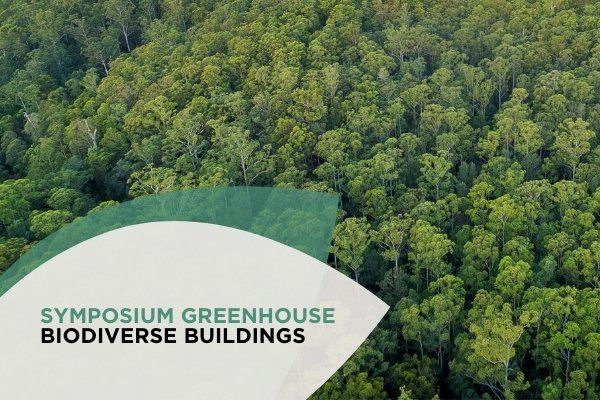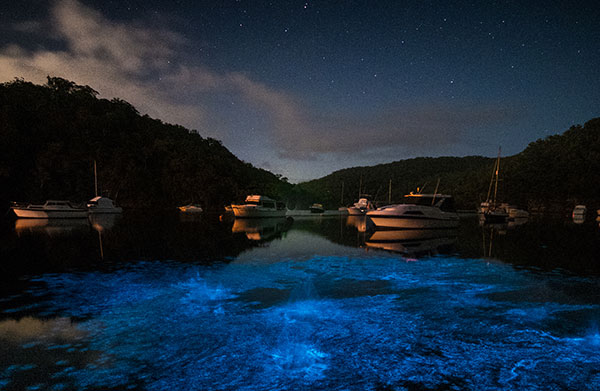
Sarah Lawlor is an architect, LFIA Member and writer for our Symposium Greenhouse series. She shares her thoughts on how the industry might approach biodiversity inspired by our Biodiverse Buildings workshop.
I was shocked to discover that we do not yet know how to solve the critical crisis that is biodiversity loss, identified as one of the top five existential risks by the World Economic Forum and the subject of the first of the Living Future Institute Australia’s (LFIA) ‘Symposium Greenhouse’ workshops. However, as Meeghan Shellard and Guy Williams, speakers at the LFIA event explained, we do not yet fully understand the interconnected web of nature, so how can we know with certainty how to stem its loss?
For the related but distinct environmental challenge of climate change, the clear correlation between carbon emissions and global warming has allowed industry and regulatory groups to outline pathways to meet net zero commitments, despite a lack of Government action. In contrast, while the work to circumvent biodiversity loss has an equally decisive and aspiration target of ‘nature positive’, the issue’s complexity negates the possibility of such a clear and linear plan towards restoration.
The impact of the construction industry on biodiversity is similarly complex. While our work has a direct impact on sites, and further impacts on habitats can be traced through supply chains, the web of our influence is manifold. At the LFIA workshop, Meeghan presented research exploring the multi-faceted impact of construction on biodiversity in such unexpected ways as through tracking in seeds and invasive species on the tyres of machinery or boots of contractors – impacts seldom considered by designers.
If we don’t yet know how to solve the problem of biodiversity loss, it could be asked how we can start working on the issue. If this rhetoric sounds familiar, it may be that there are echoes of the chicken and egg debate that has enveloped political discourse in recent months, where the merits of committing to a target without a plan to reach that target have been futilely contested. In the construction industry, uncertainty is a risk we seek to avoid, and our projects are often mapped out in a linear way from conception to completion. Nature has a different approach. The complexity of nature is unknowable, and our attempt to preserve biodiversity will necessarily involve a level of uncertainty. Rather than despair over the lack of an explicit solution to the issue, or languish in inaction, Guy suggests we ‘swim in the complexity’ of nature.
When I think about Guy’s provocation, to swim in the complexity, I consider it as twofold. Firstly, I think Guy chose the word ‘swim’, to encourage us to immerse ourselves in nature. To pause in the weightless act of swimming, to explore the awe and wonder of nature in its complexity. The ocean, for example, is a site rich in complexity, to swim in this ecosystem is to navigate the waves, the rips and currents, to feel seaweed brush against your legs, for flashes of fish to flit across your field of vision as you rise and fall through the rolling swell. Julia Baird writes in Phosphorescence (2020, p23) about the unexpected joy of ocean swimming:
Something happens when you dive into a world where clocks don’t tick and inboxes don’t ping. As your arms circle, swing and pull along the edge of a vast ocean, your mind wanders, and you open yourself to awe, to the experience of seeing something astonishing, unfathomable or greater than yourself.
This immersion in nature may provide the inspiration for how we can creatively interact with our environment to support a regeneration of biodiversity.
To invite us to soak up nature in this way, Guy could have alternatively used the words; to dive or to plunge, to flounder, sink or float, but instead, he encouraged us to swim. That swimming is requires action adds further nuance to this contemplative exercise. The act of swimming doesn’t require a destination, it involves the physical act of rotating arms, propelling the body forward. In this way, I think about the necessity to start moving, to start acting, regardless of the unknowability of the habitat or environment, and regardless of the ambiguity of our destination. That we may be swept off-course by rips or winds, hindered by stingers, or waylaid by various obstacles seems inevitable, but we are encouraged to begin that act of movement regardless.
So, how do we start to act, to address the issue of biodiversity loss when we do not yet fully understand its complexities? We begin.
There are mitigation mechanisms already in place in various voluntary environmental certification schemes, including the Living Building Challenge, where a holistic, system-thinking approach is promoted, that speaks to the interconnected web of biodiversity. Historically, humankind have built cities in ways that have heralded our dominance over the natural environment. There is an ecological imperative that we evolve the way we design to reconnect with nature. In this approach, we could learn from Julia Baird’s continued reflection on ocean swimming in Phosphorescence (2020, p29), in which the vastness of nature serves to remind us of our comparative smallness:
A swim is a reminder of the vastness of the ocean and all it contains. We spend a lot of time in life trying to make ourselves feel bigger – to project ourselves, occupy space, command attention, demand respect – so much so that we seem to have forgotten how comforting it can be to feel small and experience the awe that comes from being silenced by something greater than ourselves, something unfathomable, unconquerable and mysterious.
The work done to ensure that conversations about climate change and carbon emissions are now common practice in our industry can be used to lead clients from the now familiar concept of net-zero to the complementary inversion of ‘nature positive’. As part of the LFIA event, we workshopped strategies to elevate the issue of biodiversity in our work, and motivate collective action. One of the ideas to come out of this discussion was to use emotional connection with nature to generate discussion with clients, and leverage that attachment to introduce the issue of biodiversity.

‘Blue Bobbin Bioluminescence’ by Daniel Bourke (Hawkesbury River, Sydney)
I remember listening to Caroline Pidcock, an advocate for biophilic design, talk about her birthplace of Grafton on the Clarence River and upbringing in Sydney, and how she has been shaped by the mighty water systems of those places. Beyond an acknowledgment of Country, this reflection on the interconnection we have with Country made me reflect on my own upbringing, and the places important to me. We can learn from Country the strength of this interconnectedness of the natural world. To borrow once more from Baird’s Phosphorescence (2020, p49):
Country is more than just a place. Rock, tree, river, hill, animal, human—all were formed of the same substance by the Ancestors who continue to live in land, water and sky… Country is family, culture, identity. Country is self… In the learning borne of country is the light that nourishes the world (p.49).
One of the places most formative to my childhood was spending time on the Hawkesbury River, Darug Country, or ‘up the river’, as we would say. Some of my strongest memories are of scrambling over oyster crusted rocks, having ‘facials’ from the silty mud scooped off the riverbed, and skirting the foamy swell that lapped the shore that we thought was pelican poo. Recently, I’ve learnt that in certain rare conditions, that Hawkesbury foam plays host to a sparkling display of bioluminescence, a natural phenomenon where microorganisms produce an organic, glowing reaction to movement. If we can enter into conversations with our clients and colleagues that evoke memories like these, elicit emotional connections, and spark a wonder of nature, they may form the bridge we need to start taking actions towards supporting biodiversity. In swimming in the complexity of biodiversity, we may find that with complexity, comes beauty.

Sarah Lawlor is an Associate and registered architect at fjmtstudio. In 2020, Sarah was awarded the National Association of Women in Construction (NAWIC) International Women’s Day Scholarship for her research project ‘Is Sustainability Leadership in the Built Environment Women’s Business?’, and was a finalist in the Green Building Council’s 2021 Future Green Leader Award. Sarah is co-chair of the Australian Institute of Architects NSW Chapter Editorial Committee for the Architecture Bulletin, and hosts the Design Conscious podcast.

